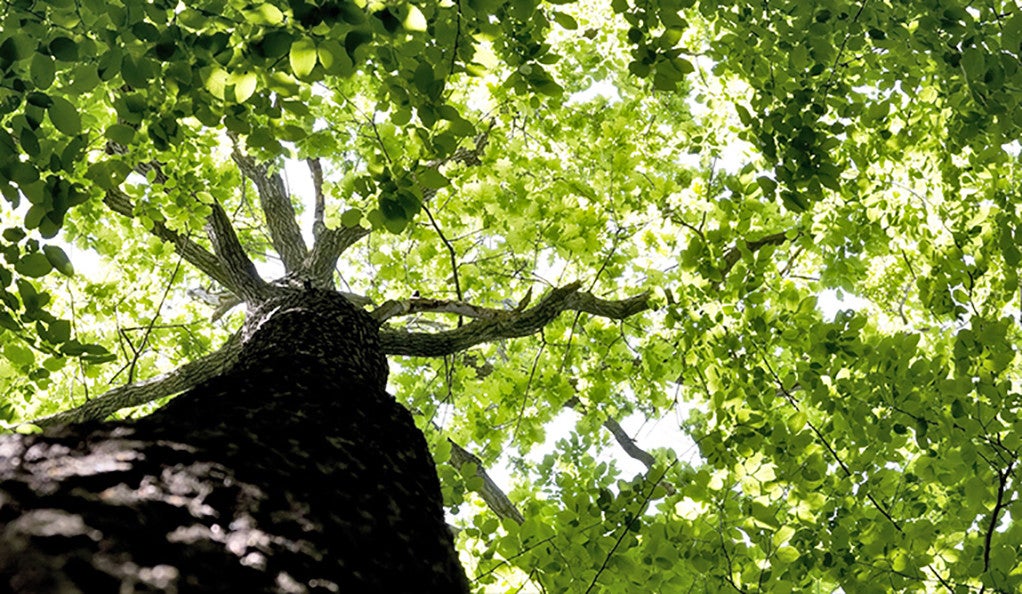A science discovery made in the shade

Blue-green algae are getting their day in the sun — not that they need much of it. A new analysis of their molecular makeup could lead to better solar technology and crops that grow just fine with less sunlight.
In a new study in the journal Science Advances, researchers from Yale, Arizona State University, and Penn State University report on structural properties that allow certain blue-green algae to thrive under lower-sunlight conditions. It’s the first time that scientists have been able to see these structural properties, offering clues for bioengineering hardier crops and designing more effective solar cells.
Blue-green algae, also called cyanobacteria, are microscopic organisms that grow in both water and terrestrial environments. They contribute as much as half of the photosynthesis taking place on Earth, thanks to their ability to thrive in a wide range of environments. Photosynthesis is the process by which plants and algae generate the atmospheric oxygen that sustains life on the planet.
“Certain organisms can live off of light, while also being in the shade. Understanding how that works is remarkable,” said Christopher Gisriel, a postdoctoral associate in chemistry at Yale and first author of the study.
Donald Bryant of Pennsylvania State University is the study’s senior author.
To find out why cyanobacteria are so successful, the researchers studied Fischerella thermalis, a terrestrial cyanobacteria.
When Fischerella thermalis is deprived of bright, high-energy sunlight (called white light), it switches gears. It instead starts absorbing low-energy sunlight, known as far-red light.
How does it make this switch? Gisriel said it’s all about the chlorophyll — the green pigment responsible for harvesting light within plants. The typical form of chlorophyll, called chlorophyll a, absorbs white light; an alternate form, called chlorophyll f, is able to absorb far-red light.

“These organisms that can absorb far-red light, can actually switch back and forth,” Gisriel said. “If you put them in white light, they only use chlorophyll a, and they’re just like all the other cyanobacteria. But if you move them to the shade, where they have more of this lower-energy, far-red light, they actually switch out some of the chlorophyll a’s for chlorophyll f, and that allows them to absorb far-red light. That’s a testament to the plasticity of photosynthesis — it can adapt to many environments, which I think is a pretty incredible mechanism.”
Gisriel said as much as 25% of all cyanobacteria may use far-red light for photosynthesis. It allows them to grow under a forest canopy and beneath other plants on the surface of a pond, he added.
The researchers used a powerful new microscopy technique known as Cryo-EM (cryogenic electron microscopy) to cool samples of Fischerella thermalis and embed them in ice. Cryo-EM gathers thousands of images of sample particles in various orientations and uses computer algorithms to re-assemble the images into a detailed, three-dimensional composite, called a density map.
This method revealed some locations of chlorophyll f molecules present in Fischerella thermalis that are responsible for far-red light adaptation, Gisriel said.
As for future applications, the researchers said the work suggests several possibilities. Perhaps two crops could be grown together, such as tall corn with short alfalfa. Another outcome could be crops that thrive in a wider variety of weather conditions. There also may be applications for new generations of light-harvesting technology, such as photovoltaics.
“This is fundamental research that paves the way, potentially, for other things,” Gisriel said.
Related
Media Contact
Fred Mamoun: fred.mamoun@yale.edu, 203-436-2643